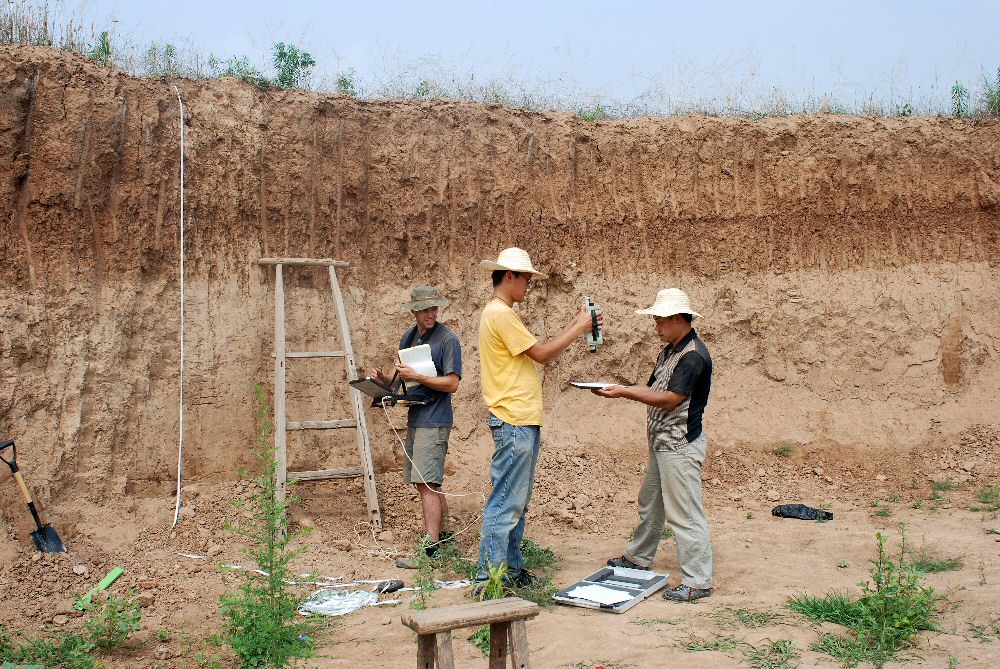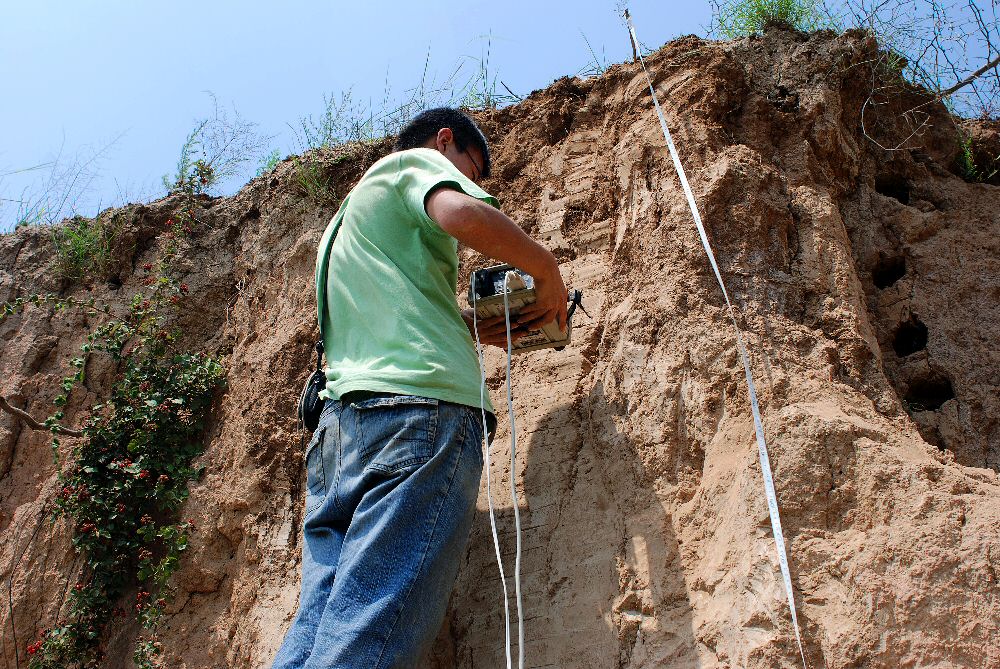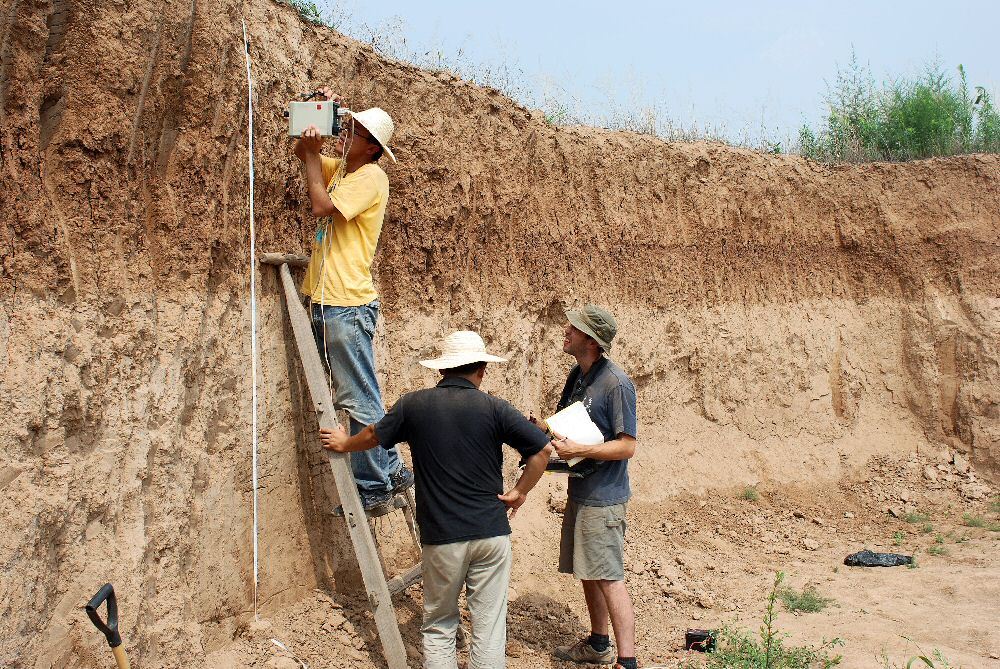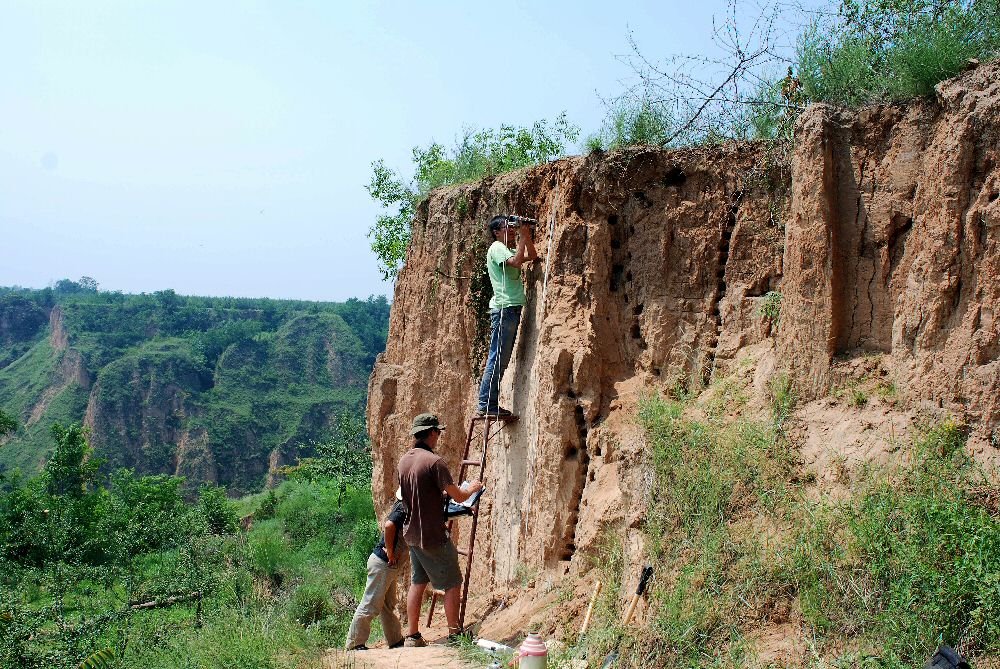News




A team, led by Dr Mike Smith and Dr Tom Stevens of Kingston University and supported by NERC FSF, has just returned from the Chinese Loess Plateau. The aim of this pilot project was to determine whether the spectral reflectance of loess sediments are correlated to their magnetic susceptibility.
Calibration of a rapid, low-cost technique for the multi-spectral imaging of Chinese loess deposits
NERC FSF recently supported a trip to the Chinese Loess Plateau to test the feasibility of an imaging technique to record spectral profiles of loess sediments. Loess are silt size (3.9 to 62.5 microns) windblown sediment, with grains larger than clay but smaller than sand. As a result they manage to inveigle there way into every item of clothing, case or bag! A GER1500 was loaned to Dr Mike Smith and Dr Tom Stevens, Kingston University, to record spectra (point reflectance) along loess profiles. In tandem, magnetic susceptibility (using a Bartington MS2 meter) and RGB/NIR reflectance (using a Nikon D80) were also recorded. Analysis of the data will determine whether reflectance can be correlated to magnetic susceptibility.
In addition, the GER1500 will be used to calibrate the Nikon D80 in order to determine whether an "off-the-shelf" imaging approach can be deployed in future research looking to investigate facies variations over short lateral distances. This will require the collection of large quantities of profile information; an imaging technique offers the best potential for rapid data collection. Facies differences revealed using loess spectra will complement calculated sedimentation rates and together will form a powerful approach to constraining local influences on loess deposition and alteration. This will allow corrections for lateral variations to be introduced and, ultimately, the extraction of the broad monsoon influence.
In 30-40 degree C heat, the GER1500 was deployed at two sites on the loess plateau in China, over a number of days. Repeat measurements were taken on profiles and differences between cleaned and uncleaned surfaces were tested. Dust was a particular hazard in this area where deposits of the substance attain 400 metre thicknesses. The process required four people and perseverance as the monsoon season is not favourable for clear skies, while cleaning of the exposures was problematic due to cracking of the surface. Nonetheless, more than 500 spectra were obtained, along with high resolution visible and IR photographs of profiles, over 30 lab samples and detailed magnetic susceptibility analyses of the profiles.




